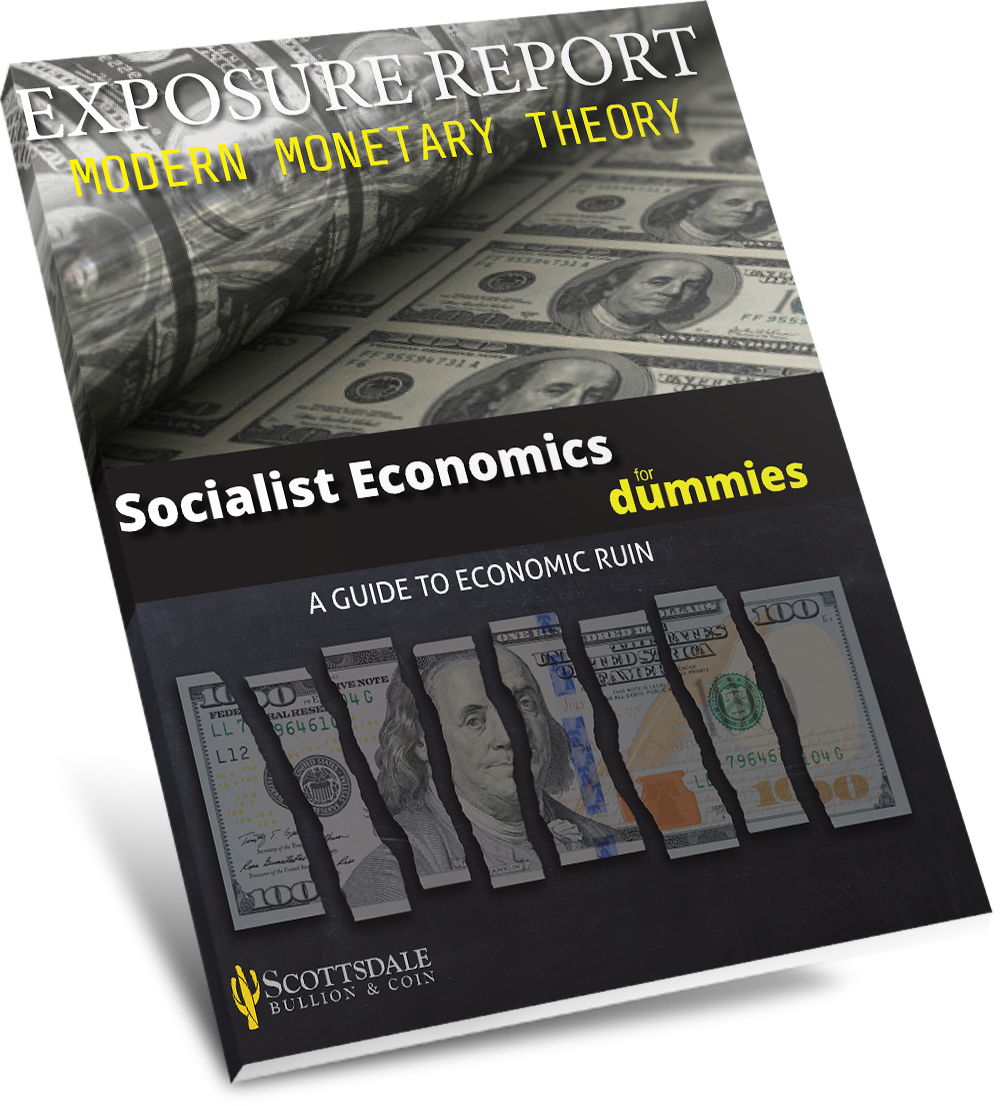 The United States’s fiscal outlook is on a multi-year decline, according to one of the big three credit rating agencies.
The United States’s fiscal outlook is on a multi-year decline, according to one of the big three credit rating agencies.
Moody’s is reiterating a warning given in 2024, cautioning that the country’s creditworthiness holds a negative outlook.
The system issues of skyrocketing national debt and budget-eroding interest payments are primarily to blame, although high interest rates exacerbate debt affordability.
The major credit rating agency also points to political gridlock and a risky economic agenda as preventing any meaningful policy changes, keeping the US on an unsustainable fiscal path.
Triple-A Status Maintained…For Now
The US still holds the agency’s highest Aaa rating, which Moody’s Investors Service defines as:
“Obligations rated Aaa are judged to be of the highest quality, subject to the lowest level of credit risk.”
In other words, the US is judged to be extraordinarily likely to meet its financial obligations.
This rating is used by investors when determining the risk profile of buying US assets such as bonds and Treasuries.
Generally, a higher rating increases demand for US debt and lowers interest rates, both of which make it easier to repay debt obligations.
A Multi-Year Negative Outlook
In addition to a credit rating, Moody’s analysts apply an outlook to every country, signaling the probable direction of its rating over the near-term, defined as 12-24 months.
Until 2023, the US had upheld a stable outlook, which meant its credit rating was likely to remain the same.
For the past two years, the agency has held a negative outlook on America’s creditworthiness, indicating increased risk of a downgrade due to its worsening trajectory.
What Caused the Downgrade
The credit rating firm highlights two grim economic realities for the downgraded outlook:
National Debt
The US federal debt stands at an alarming $36 trillion and is projected to surge to roughly $60 trillion by 2035, according to the nonpartisan Congressional Budget Office. A fiscally lethal combination of political inaction and wayward federal policies is making the situation worse. Most recently, analysts point to the economic fallout of Trump’s blanket tariff gamble.
Debt-to-GDP Ratio
For the past five years, national debt has comprised around 120% of gross domestic product (GDP), suggesting the country cannot outgrow its debt. Moody’s foresees this crucial ratio jumping to 130% in the next decade—a move which would heavily weigh on the country’s ability to climb out of its debt hole.
Interest Payments
The cost of servicing US debt is climbing rapidly. Interest payments now exceed defense spending, making them one of the federal government’s largest expenses. Moody’s underscores the role elevated interest rates play in exacerbating servicing costs, although the steadily rising debt remains the core catalyst.
The Fraying of US Debt Safety Nets
The collective strength of the US dollar and Treasuries has been the country’s economic saving grace, shielding investors from the full impact of the debt crisis.
From Moody’s perspective, these primary instruments for issuing US debt are central to supporting the country’s triple-A rating. They enable the government to reliably raise funds at scale.
Alarmingly, these stalwart pillars of American fiscal supremacy are faltering. In 2025, the dollar sank to a three-year low while 10-Year Treasury yields spiked, reflecting a worldwide lack of confidence regarding the country’s financial situation. Deutsche Bank cautions that the greenback could lose its safe-haven status.
“We see diminished prospects that these strengths will continue to offset widening fiscal deficits and declining debt affordability,” says Moody’s.


